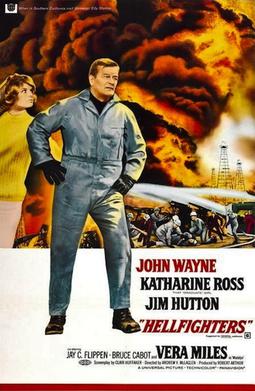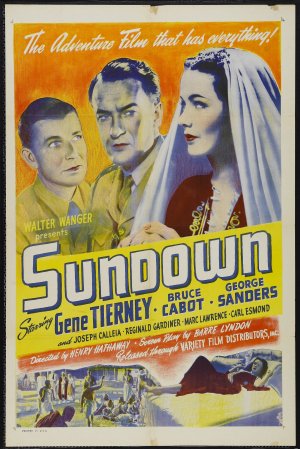 I recently saw the 1970 film WUSA on Movies TV. After I watched it, I looked Joanne Woodward up on Wikipedia specifically to see where she was born. I was surprised to discover that she was born and raised in Georgia and that she attended college in Louisiana.
I recently saw the 1970 film WUSA on Movies TV. After I watched it, I looked Joanne Woodward up on Wikipedia specifically to see where she was born. I was surprised to discover that she was born and raised in Georgia and that she attended college in Louisiana.
Why was I so shocked? Because WUSA was set in New Orleans and it featured Joanne Woodward speaking in one of the most worst Southern accents that I had ever heard. A little over an hour into the film, Woodward’s character says, “What’s all the rhubarb?” And while “What’s all the rhu…” sounds properly Southern, the “…barb” was pronounced with the type of harshly unpleasant overemphasis on “ar” that has given away many Northern actors trying to sound Southern. Hence, I was shocked to discover that Joanne Woodward actually was Southern.
That said, her pronunciation of the word rhubarb pretty much summed up every problem that I had with WUSA. Actually, the real problem was that she said “rhubarb” in the first place. It came across as being the type of thing that a Northerner who has never actually been down South would think was regularly uttered down here. And I will admit that WUSA was made 16 years before I was born and so, it’s entirely possible that maybe — way back then — people down South regularly did use the word rhubarb. But, for some reason, I doubt it. I know plenty of old Southern people and I’ve never heard a single one of them say anything about rhubarb.
As for WUSA, it’s a long and slow film. A drifter named Reinhardt (Paul Newman) drifts into New Orleans and, with the help of an old friend who is now pretending to be a priest (Laurence Harvey), Reinhardt gets a job as an announcer at a right-wing radio station. He reads extremist editorials that he doesn’t agree with and whenever anyone challenges him, he explains that he’s just doing his job and nothing matters anyway.
Reinhardt also gets himself an apartment and spends most of his time smoking weed with long-haired musician types, the exact same people that WUSA regularly denounces as being a threat to the American way. Living in the same complex is Geraldine (Joanne Woodward), a former prostitute who has a scar on her face and who says stuff like, “What’s all the rhubarb?” She falls in love with Reinhardt but finds it difficult to ignore what he does for a living.
Meanwhile, Geraldine has another admirer. Rainey (Anthony Perkins) is an idealistic and neurotic social worker who is regularly frustrated by his efforts to do good in the world. Reinhardt makes fun of him. The local crime boss (Moses Gunn) manipulates him. And WUSA infuriates him. When Rainey realizes that WUSA is a part of a plot to elect an extremist governor, Rainey dresses up like a priest and starts carrying around a rifle.
Meanwhile, Reinhardt has been assigned to serve as emcee at a huge patriotic rally. With Geraldine watching from the audience and Rainey wandering around the rafters with his rifle, Reinhardt is finally forced to take a stand about the people that he works for.
Or maybe he isn’t.
To be honest, WUSA is such a mess of a film that, even after the end credits roll, it’s difficult to figure out whether Reinhardt took a stand or not.
Anyway, WUSA is not a lost masterpiece and I really wouldn’t recommend it to anyone. The film’s too long, there’s too many scenes of characters repeating the same thing over and over again, and neither Newman nor Woodward are particularly memorable. (You know a movie is boring when even Paul Newman seems like a dullard.) On the plus side, Anthony Perkins gives such a good performance that I didn’t once think about the Psycho shower scene while watching him.
As boring as WUSA is, I have to admit that I’m a little bit surprised that it hasn’t been rediscovered. Considering that it’s about a right-wing radio station, I’m surprised that there haven’t been hundreds of pretentious think pieces trying to make the connection between WUSA and Fox News. But, honestly, even if those think pieces were out there, it probably wouldn’t do much for WUSA‘s repuation. According to the film’s Wikipedia page, Paul Newman called it, “the most significant film I’ve ever made and the best.” Paul Newman’s opinion aside, WUSA is pretty dire.
 Chance Buckman (John Wayne) is the best there is when it comes to fighting oil fires. Along with Greg Parker (Jim Hutton), Joe Horn (Bruce Cabot), and George Harris (Edward Faulkner), Chance travels the world and puts out fires that the regular authorities can’t handle. Chance loves his job but he also loves his ex-wife, Madelyn (Vera Miles). When Madelyn indicates that she wants to remarry Chance but only if he pursues a less dangerous line of work, Chance retires from firefighting and becomes an oil executive. He leaves his firefighting company to his new son-in-law, Greg. When Greg and Chance’s daughter (Katharine Ross) head down to Venezuela to battle a fire and find themselves not only having to deal with the flames but also with a band of revolutionaries, Chance is the only one who can help them.
Chance Buckman (John Wayne) is the best there is when it comes to fighting oil fires. Along with Greg Parker (Jim Hutton), Joe Horn (Bruce Cabot), and George Harris (Edward Faulkner), Chance travels the world and puts out fires that the regular authorities can’t handle. Chance loves his job but he also loves his ex-wife, Madelyn (Vera Miles). When Madelyn indicates that she wants to remarry Chance but only if he pursues a less dangerous line of work, Chance retires from firefighting and becomes an oil executive. He leaves his firefighting company to his new son-in-law, Greg. When Greg and Chance’s daughter (Katharine Ross) head down to Venezuela to battle a fire and find themselves not only having to deal with the flames but also with a band of revolutionaries, Chance is the only one who can help them.






